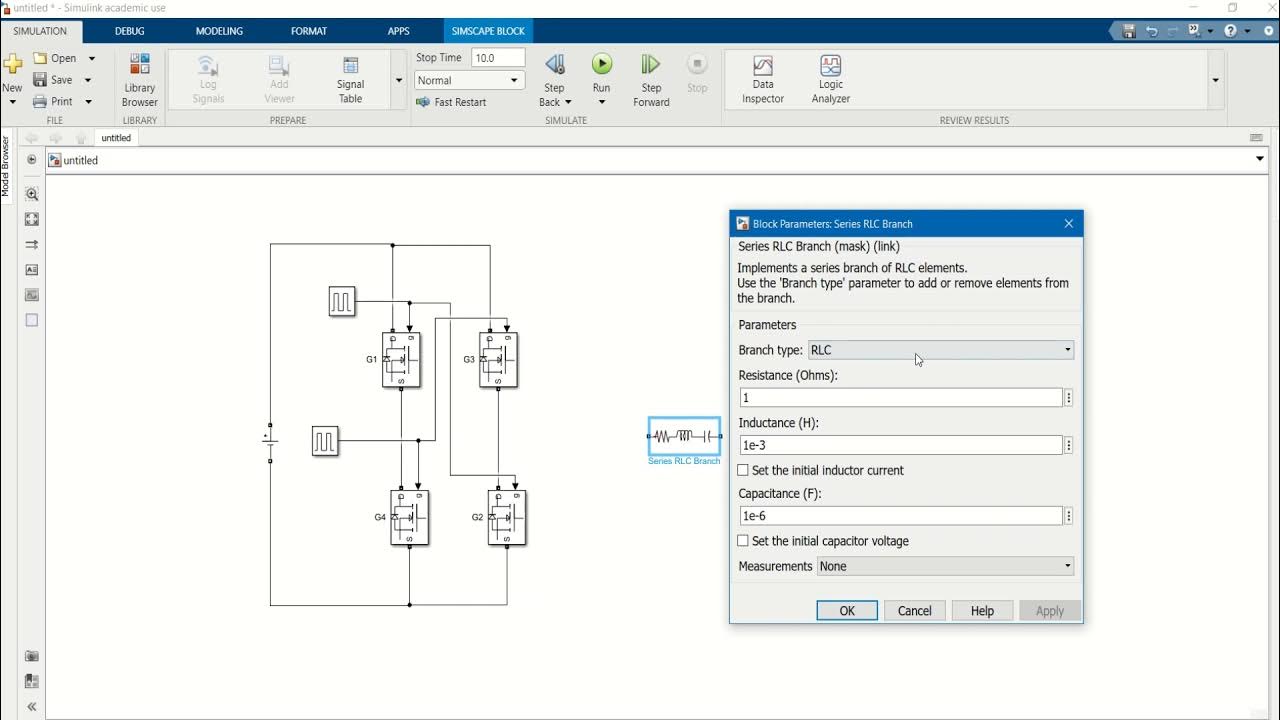entrance into the DC DC Converter Basic Topologies
Summary
TLDRThis video explains the workings of a DC-DC converter, focusing on the role of switches and the control systems used to regulate output voltage. It discusses how the switch modifies the DC voltage, the use of low-pass filters to eliminate harmonics, and the efficiency of the system when ideal components are used. The video introduces two key types of converters: the buck converter, which reduces voltage, and the boost converter, which increases it. Overall, it demonstrates how switching devices within a network of reactive elements can convert an input voltage to any desired output voltage.
Takeaways
- 😀 The switch controls the DC component of the voltage by altering its average value, which is determined by the duty cycle.
- 😀 A duty cycle of 0.5 (50%) reduces the input voltage of 100V to an output voltage of 50V.
- 😀 Power dissipation in the switch is ideally zero, as no voltage or current is present when the switch is either fully on or fully off.
- 😀 Harmonics are introduced by the switching process, and these undesired high-frequency components need to be filtered out.
- 😀 A low-pass filter can remove the undesired harmonics, leaving only the desired DC component of the voltage.
- 😀 The efficiency of the DC-DC converter can approach 100% when using ideal inductor, capacitor, and switch elements.
- 😀 The buck converter is a type of DC-DC converter that reduces the input voltage to a lower output voltage.
- 😀 The boost converter, on the other hand, increases the output voltage to a level greater than the input voltage.
- 😀 Power converters can be designed to convert any input voltage into any desired output voltage using switches and reactive elements like inductors and capacitors.
- 😀 A feedback control system adjusts the duty cycle of the switch to regulate the output voltage, keeping it in line with a reference voltage.
Q & A
What is the relationship between the duty cycle and the output voltage in a switching converter?
-The duty cycle of the switch determines the average value of the output voltage. Specifically, the output voltage is the input voltage multiplied by the duty cycle (d), where a duty cycle of 0.5 will result in half the input voltage as the output voltage.
How does the switch affect the power dissipation in the converter?
-In an ideal converter, the switch has zero power dissipation. When the switch contacts are closed, the voltage is zero, so no power is lost. When the switch contacts are open, the current is zero, again leading to no power dissipation.
What is the role of the low pass filter in the switching converter?
-The low pass filter is used to remove undesirable high-frequency harmonics from the switch’s output voltage. It allows only the DC component of the voltage to pass through, ensuring that the output voltage is as close as possible to a pure DC value.
Why must the filter corner frequency be sufficiently lower than the switching frequency?
-The filter corner frequency must be lower than the switching frequency so that the filter effectively removes the harmonics of the switching frequency, allowing only the DC component of the output voltage to remain.
What is the ideal efficiency of the DC-DC converter described in the video?
-The ideal efficiency of the DC-DC converter can approach 100% if the switch, inductor, and capacitor are ideal, meaning there are no losses in the system.
What is a buck converter, and how does it function?
-A buck converter is a type of DC-DC converter that reduces the input DC voltage to a lower output DC voltage. It does this by varying the duty cycle of the switch, controlling the average voltage that passes through the system.
What is a boost converter, and how is it different from a buck converter?
-A boost converter is another type of DC-DC converter that increases the input voltage to a higher output voltage. Unlike the buck converter, the positions of the inductor and switch are reversed in a boost converter to achieve voltage boosting.
What is the key difference between a buck converter and a boost converter?
-The key difference is that a buck converter reduces the DC voltage, while a boost converter increases it. This is achieved by the different arrangement of the inductor and switching devices in each converter.
What does the term 'reactive elements' refer to in the context of a switching converter?
-In a switching converter, reactive elements refer to components like inductors and capacitors, which store energy temporarily in the form of a magnetic field (inductor) or electric field (capacitor) to help regulate and transform the voltage.
What is the significance of using semiconductor devices in switching converters?
-Semiconductor devices are used in switching converters because they can switch on and off rapidly, enabling efficient conversion of DC voltage with minimal loss. These devices are crucial for achieving the high efficiency and precise control needed in modern power converters.
Outlines

هذا القسم متوفر فقط للمشتركين. يرجى الترقية للوصول إلى هذه الميزة.
قم بالترقية الآنMindmap

هذا القسم متوفر فقط للمشتركين. يرجى الترقية للوصول إلى هذه الميزة.
قم بالترقية الآنKeywords

هذا القسم متوفر فقط للمشتركين. يرجى الترقية للوصول إلى هذه الميزة.
قم بالترقية الآنHighlights

هذا القسم متوفر فقط للمشتركين. يرجى الترقية للوصول إلى هذه الميزة.
قم بالترقية الآنTranscripts

هذا القسم متوفر فقط للمشتركين. يرجى الترقية للوصول إلى هذه الميزة.
قم بالترقية الآنتصفح المزيد من مقاطع الفيديو ذات الصلة

Mengenal cara kerja switch-mode power supply

How does Buck Converter work? | DC-DC Converter - 1

Simulation of a Dual Active Bridge Converter in MATLAB | SIMULINK

How to design buck converter for photovoltaic system? | Buck converter design for PV module & array

Introduction to DC-DC Converters Basic Topologies

Design of DC AC Converter Using MATLAB SIMULINK
5.0 / 5 (0 votes)
